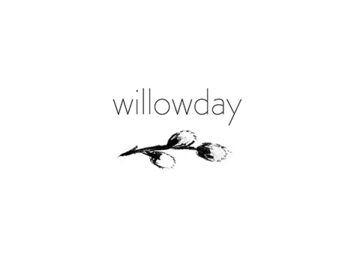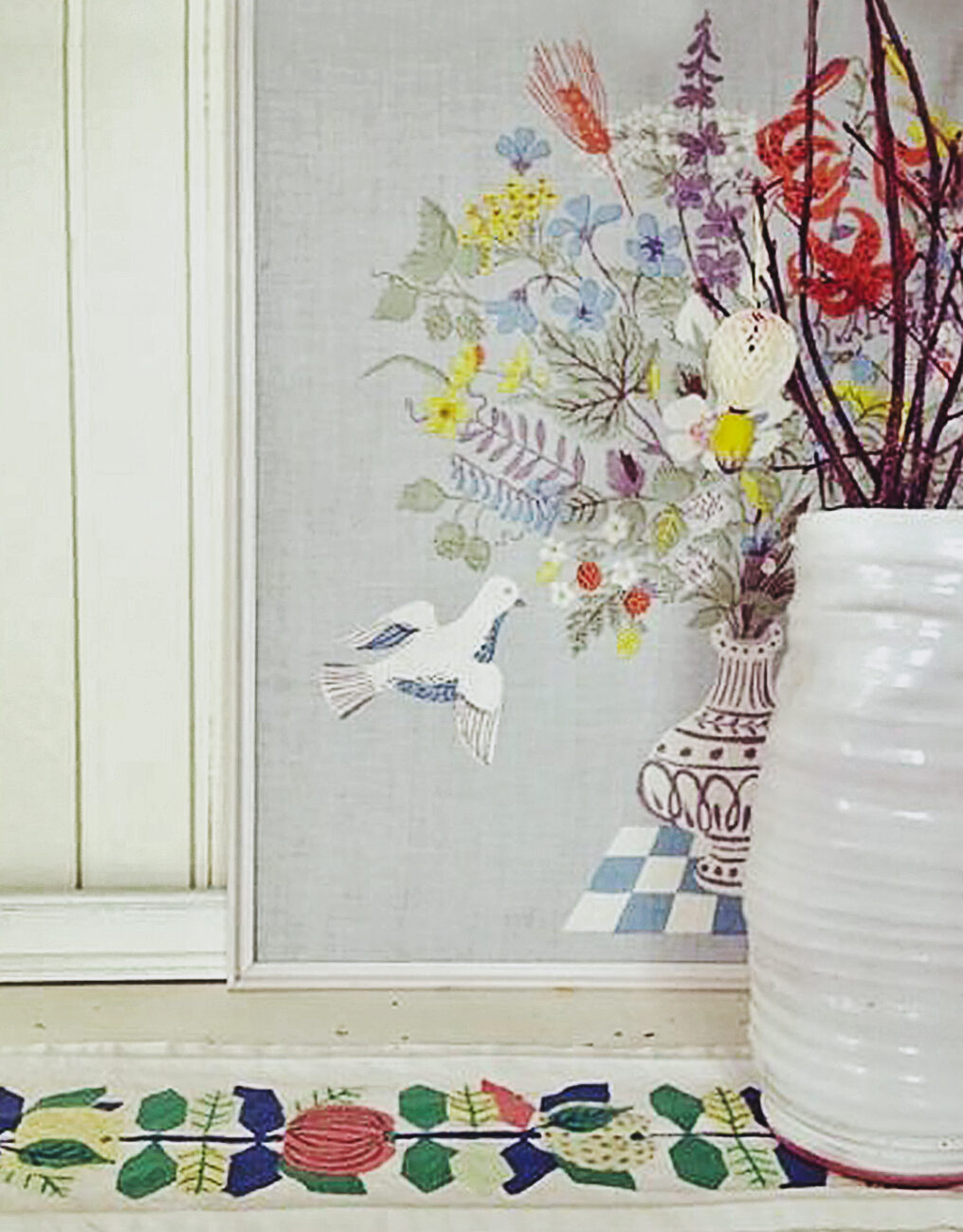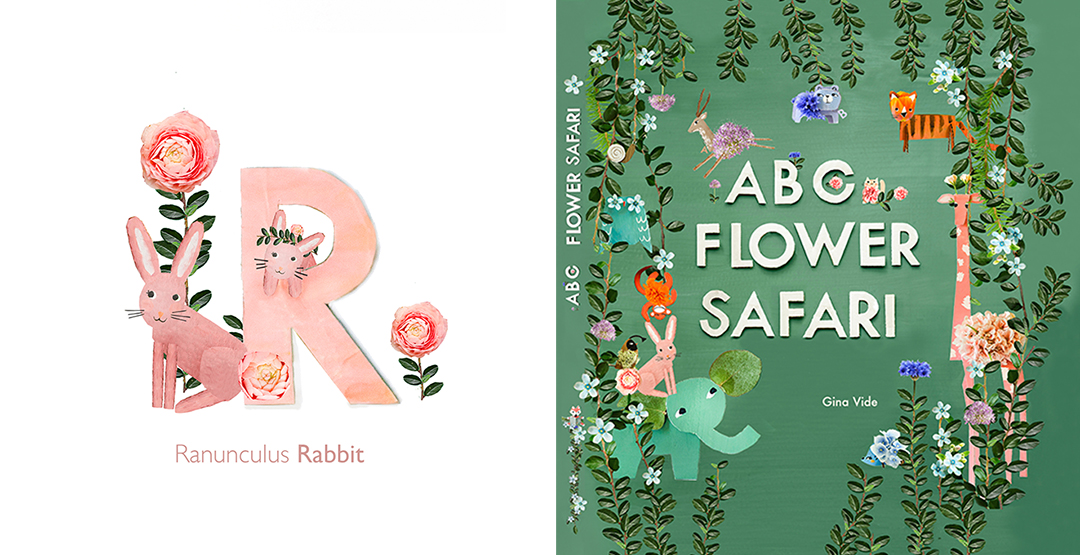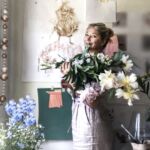I’ll never forget my first Easter in Sweden when the doorbell rang and I opened the door to see a knee-high, “trick or treating group” of Easter witches.” True story.

Standing outside my door was my 4-year-old neighbor, Harriet, and her friends, who were all dressed up in traditional Swedish Easter costumes: hair tied up in red handkerchiefs, cheeks painted red with black freckles and dressed in what looked like hodge-podge vintage aprons + smocks. With smiles and exclamations of, “Glad Påsk” (Happy Easter) each stretched out one arm with a basket and the other, holding a drawing or a handmade card for me. I quickly learned what was to come next: I was expected to reciprocate with candies or coins in exchange for their drawings and cards and they would be off: traveling door to door in this pattern all afternoon. Halloween takes another form in Sweden where it feels like it’s celebrated at Easter and with a witches-only-dress code.
Florists and grocery stores had laid clues for these unfamiliar traditions, already, throughout the weeks leading up to Easter with bright bouquets of birch branches topped with a rainbow of colored feathers. These were everywhere. In fact, I had even seen a tree here and there outdoors filled with these same bright feathers.
I couldn’t find the chocolate Easter Bunnies, familiar to me. Instead, I could find grocery-store bins filled with big paper eggs that people would fill with loose candies. All of these clues came together on Easter Thursday when I learned about Easter witches, Easter feathers, Easter Roosters, Paper Easter eggs, and even an Easter cola of sorts, called Påskmust.
Follow willowday for more posts on Instagram
Why do witches arrive at Easter? I’m asked this question every year.
The answer is that Easter in Sweden is mostly secular and the modern tradition where children dress up as witches for Easter (Maundy Thursday) predates Christianity. Pagen folklore tells a story where witches flew off on their broomsticks to dance in a legendary meadow called Blåkulla (‘blue hill’) in the Spring which is now Easter Thursday. Every year on this Thursday kids trick or treat as witches who are bribed to “be nice” before flying off for their Spring party. The feather topped bouquets are symbolic of witches’ brooms.

What are the 5 things you might not know about Swedish Easter?

1. Feathers are used for Easter Decorations
- Brightly coloured feathers in shades of bright yellow, purple, fuchsia and emerald-green, are attached to the tops of birch branches at florists or at home. This turned my idea of Swedish subtle design and aesthetics on its head!
- These feather bouquets and decorations show up everywhere: even outdoors on local shrubbery! Classics are brightly colored but, now, you can also find these in natural tones, too.
- The design elements behind this is to mimic a broom. The pages Spring ritual was to sweep away the evil spirits with a broom and that witches would fly away on brooms.
MAKE: The kids and I have made these washi tape feathers | HERE. If you’re looking for a feather project: find tutorials: here | here | here
2. Witches are traditional at Easter
- Kids dress up as witches on Easter Thursday. These costumes traditionally consist of: red cheeks and freckles and then, dress in a red scarf and shawl; and, now, a witch hats, too. If you would like to see some more Vintage Swedish Easter Cards click HERE .
- Pagen folklore alleges that witches flew off on broomsticks to dance at Blåkulla (the witches home) in the Spring.

3. Trick or Treating
- Kids in witch costumes make their rounds from house to house or even attend parties where they carry baskets of handmade Easter cards and Easter artwork that they leave to each home as they make their visits in exchange for money or candy.
- By the cards I’ve seen kids deliver to our door, experiences at school, it’s clear that there is a long tradition behind creating the cards because we receive so many cute drawings and inspired cards every year. I’ll try to share a few in my Instagram stories this coming Thursday for you to get an idea! (here) See Vintage Swedish Easter Cards HERE |
- The pages folklore that alleges that witches flew off on broomsticks to dance travel to Blåkulla (witches home) is now celebrated by kids on Easter Thursday in the trick-or-treating-tradition. The idea is that if you give the witch a gift (candy or a coin), this will ward off evil spirits.
MAKE: Get a FREE PRINTABLE Floral Bunny Gift Card HERE | Shadow Puppet Bunny PRINTABLE HERE| Follow these instructions to make a pop-up EASTER CARD | HERE

4. Easter Candy in Paper eggs instead of Chocolate Easter Candy
- While many other countries typically have a tradition of chocolate candies at Easter time, in Sweden, beautifully painted paper shells are available which come in many sizes and are filled to the rim with candy goodies.
- Many schools and families organize Easter egg hunts, giving children clues and riddles to help them track the sweets down.
- Candy is the “bribe of choice” for the trick or treating witches who come by “trick or treating” on Easter Thursday.

5. The Easter Bunny is an Easter Rooster in Sweden.
- Easter Roosters deliver Easter eggs, not the Easter Bunny.

Follow willowday for more posts on Instagram


Easter Bunnies aren’t traditional in Sweden |here); Roosters bring the easter treats. Feathers are used for Easter decorations) If you’d like to see more, you might like to check out my Easter Pinterest Board with ideas from myself and others plus VINTAGE Swedish Easter Cards | HERE
Thank you for your curiosity and for meeting me here. My wishes for a wonderful week ahead. I love to hear from you. Are you familiar with these traditions? You can always send me a mail at willowtweet (at) gmail (dot) com or tag me in Instagram with your willowday inspired crafts! Use the the #willowdayprojects hashtag, too!
Willowday Wishes,
Gina
SHOP
My ABC Floral Safari Book | HERE | Shipping internationally







